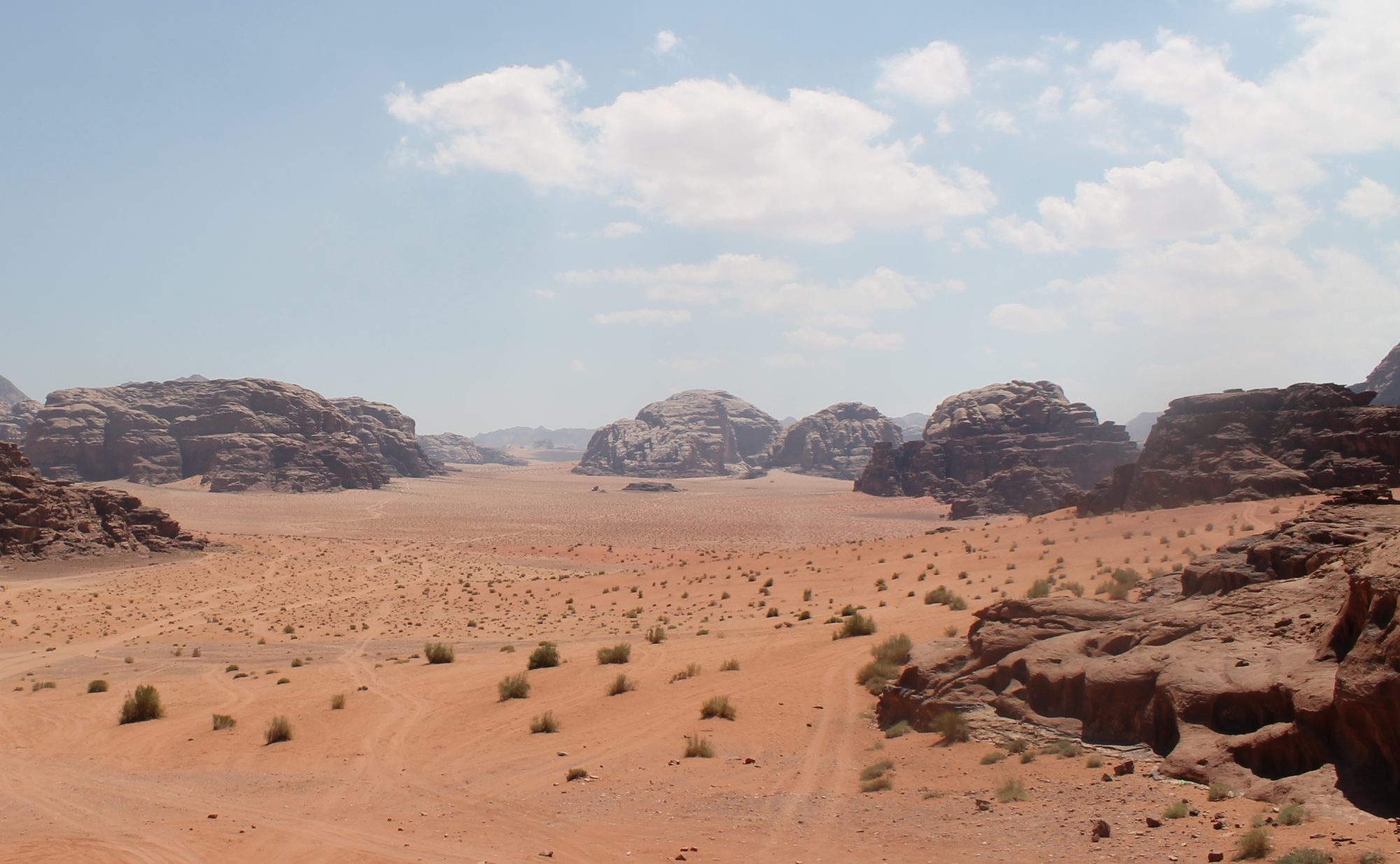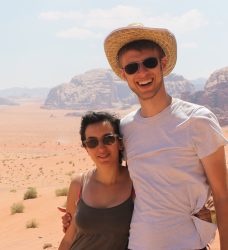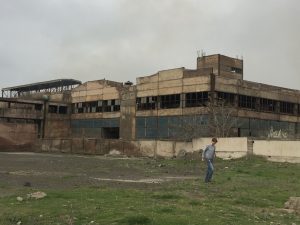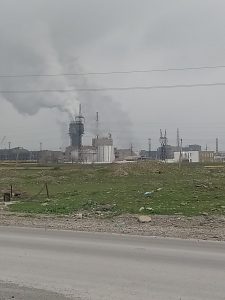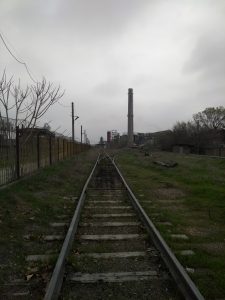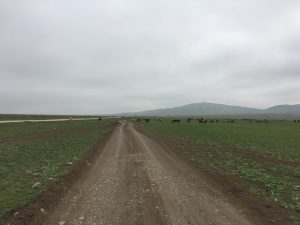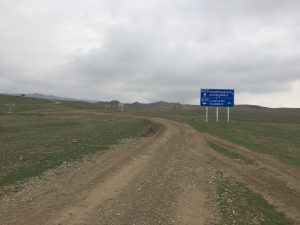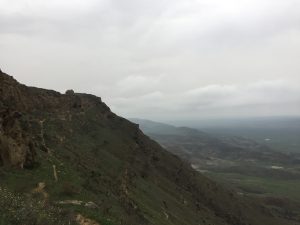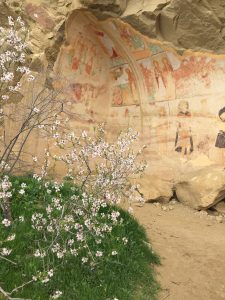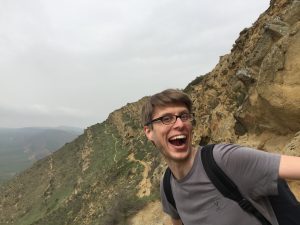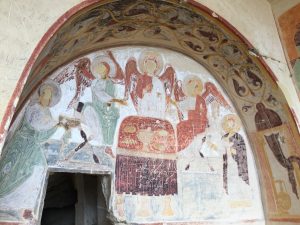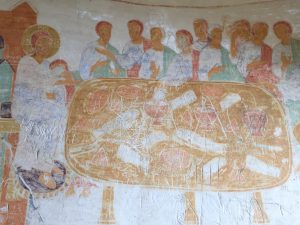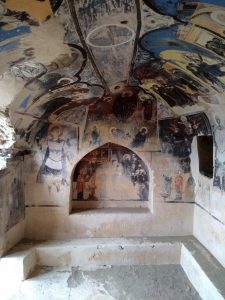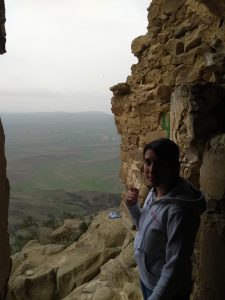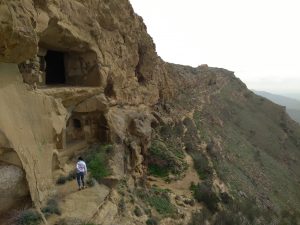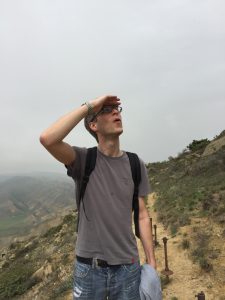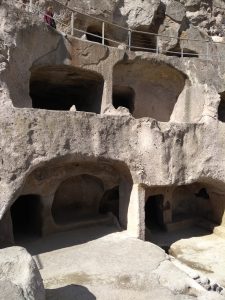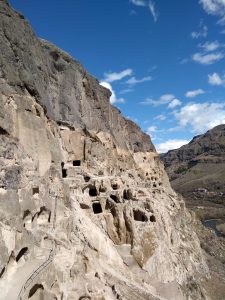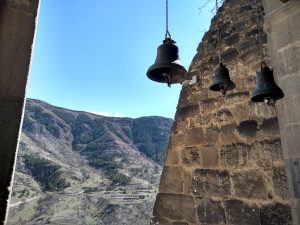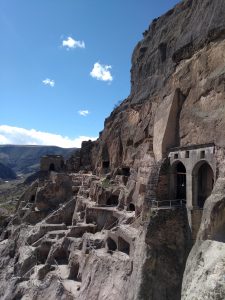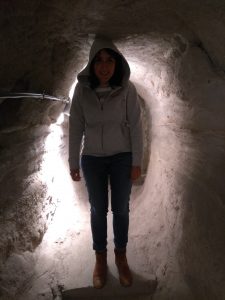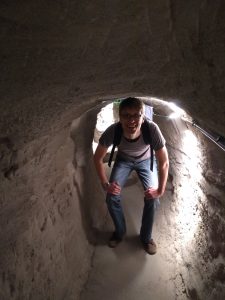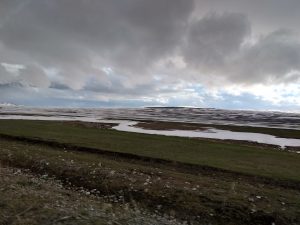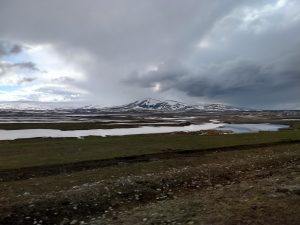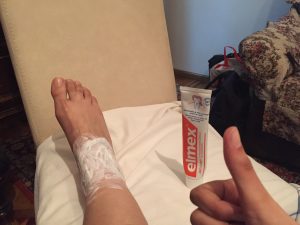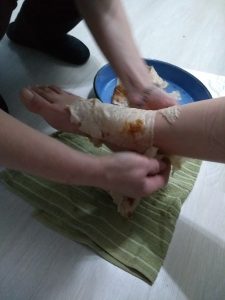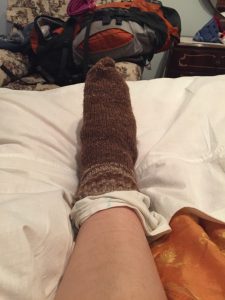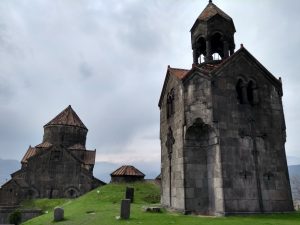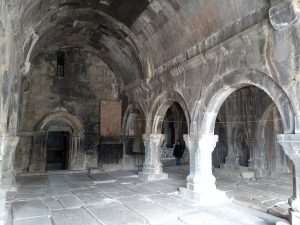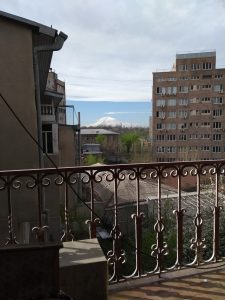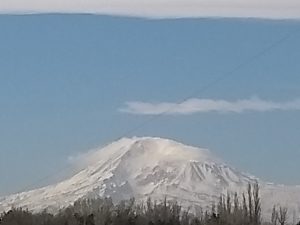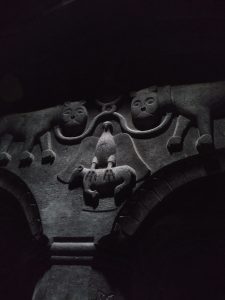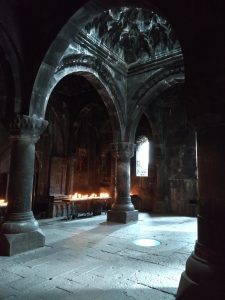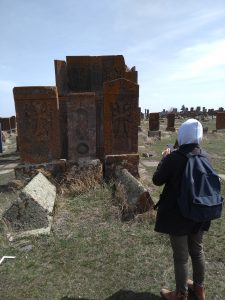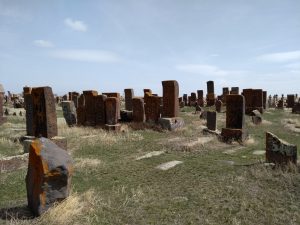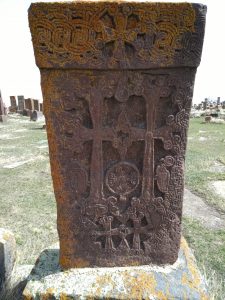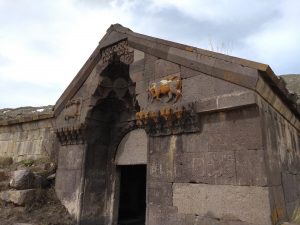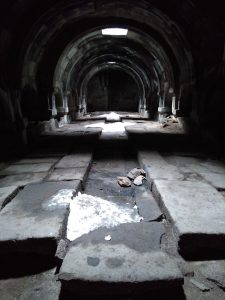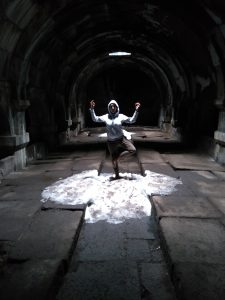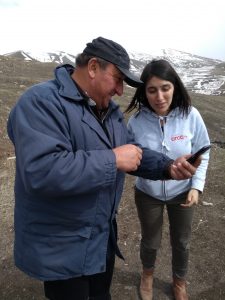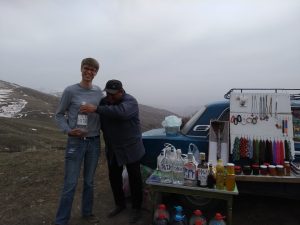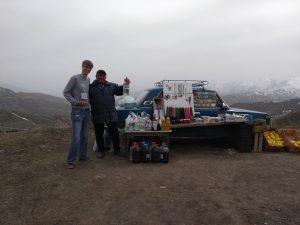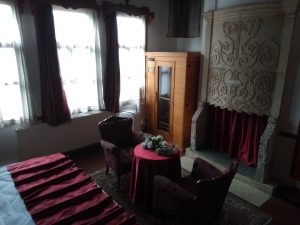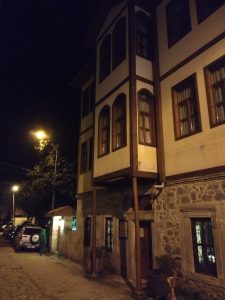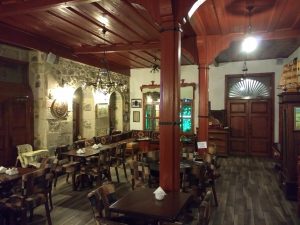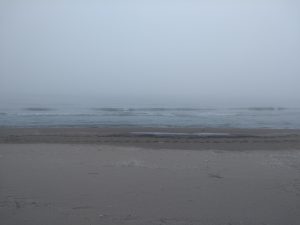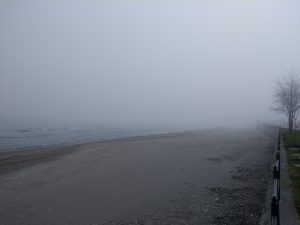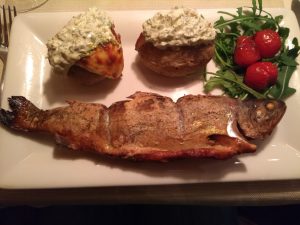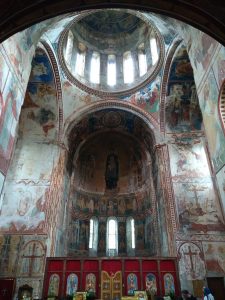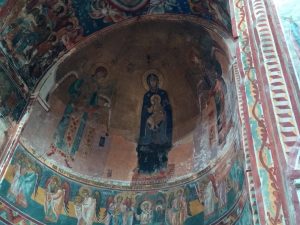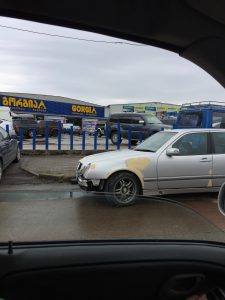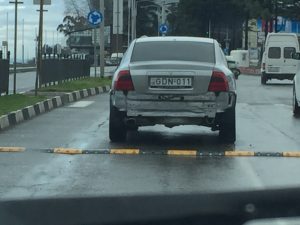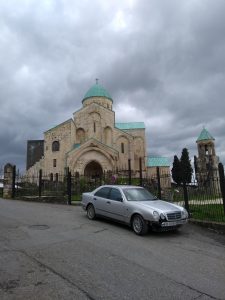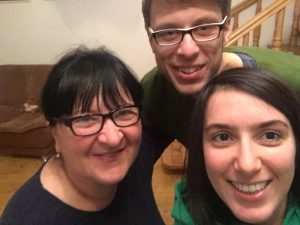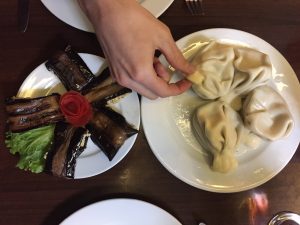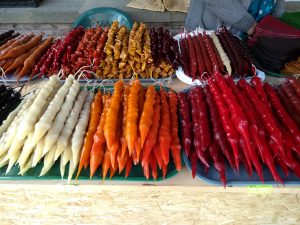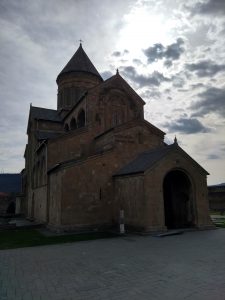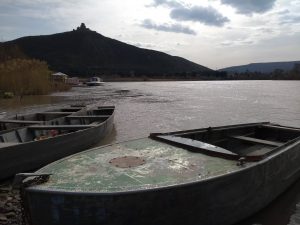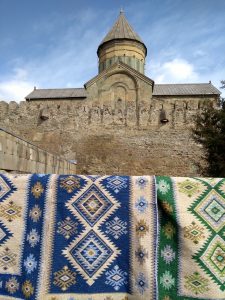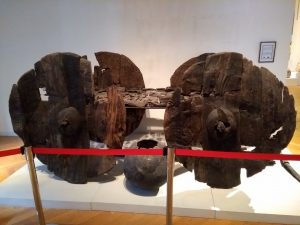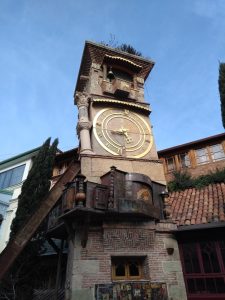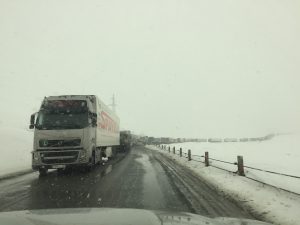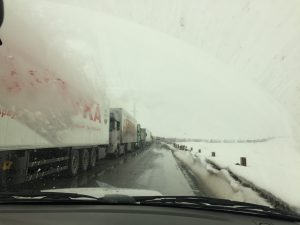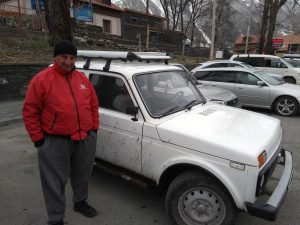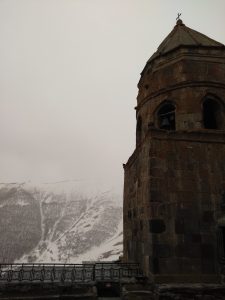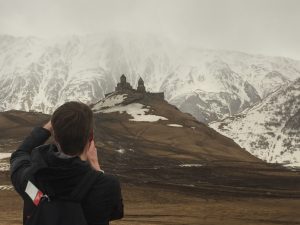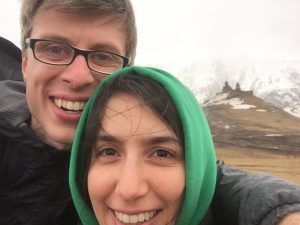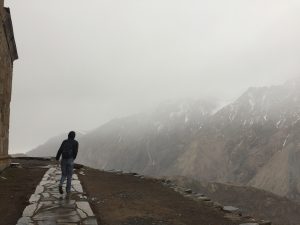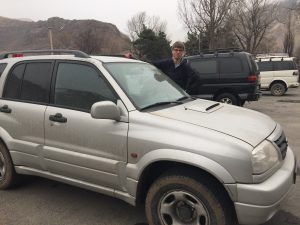Thursday & Friday, the 29th & 30th of March
After our last post, we stayed in the beautifully named town of Yeghegnadzor. Our guesthouse hosts were very attentive, if a bit reserved. No luck trying to make smalltalk. They prepared us a wonderful evening dinner of fish, tolma (minced meat wrapped in wine leaves) and salads:
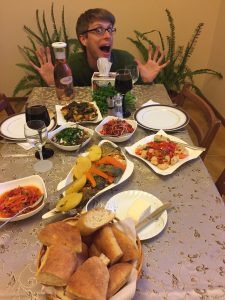
In the evening we also met our co-guests: a Belgian-Czech couple that were already a few days in the area, and pointed us towards a nice hike in the surrounding mountains. We hope to meet them again in Hoeilaart 🙂
So on thursday, we set out for the deserted monastery of Tsakhatsqar. Early in the day, we passed by a little jewish cemetery. Apparently there used to be a jewish community in these mountains in the 13th-14th century, but this cemetery is all that is known about them:
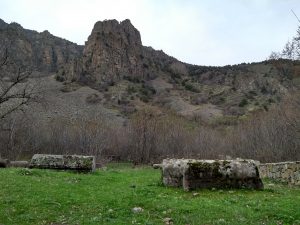
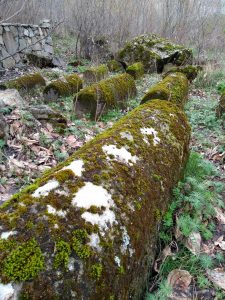
Walking up the mountain, we didn’t meet a single soul, but were welcomed by some very nice views at the monastery:

As rain threatened we abandoned the further hike to Smbataberd fortress, and instead drove to the Nonavank monastery. By this time we were getting a bit tired of all the monasteries, to be honest 🙂
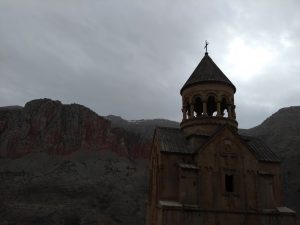
On Friday we continued on our way to the border, passing by yet another monastery, in Tatev (this is the last one, promise!):
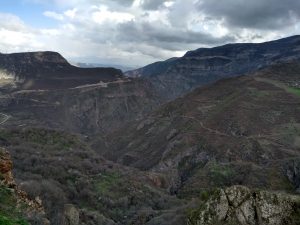
(Nice view from the bishop’s palace. These guys got all the good stuff in the middle ages!)
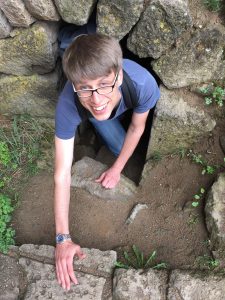
(In this picture: Tom crawling from the bishop’s latrines.)
We also found another Silk Road reference:
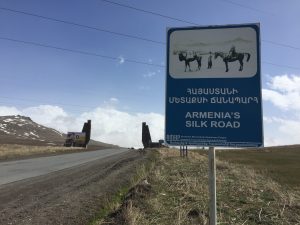
We stayed the night in Kapan, driving by the Nagorno Karabakh border on our way there. For those of you that are interested: this is Azeri territory occupied by a de facto independent Armenian republic. A brutal war was fought over the area in the early 90s. This conflict is still smouldering, so Armenians and Azeris still aren’t on speaking terms.
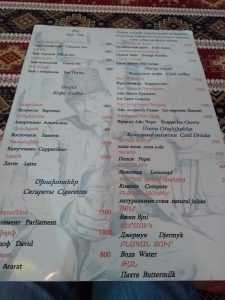
(The restaurant in Kapan had cigarettes on the menu. You can imagine what it smelled like inside…)
Saturday, the 31st of March
We set out to cross the Armenia-Iran border on Saturday. The day started out not so well: first some of the densest fog so far while crossing mountains (makes for a very pleasant drive, I tell you)…
Intermezzo quiz:
Can you tell which fog belongs to which country? We’ll provide the answer below this post!
Countries: Serbia, Turkey, Armenia
Photos:
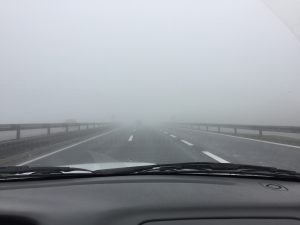
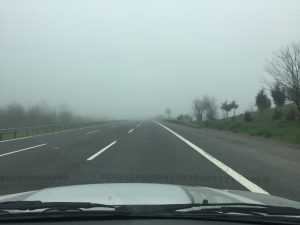
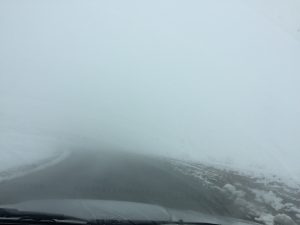
… Then we made it almost as far as Meghri, when we ran into a really big nail. Luckily, changing the tire didn’t take us too long, and a repair shop was nearby. So after only half an hour, we were again under way.
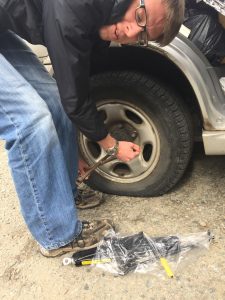
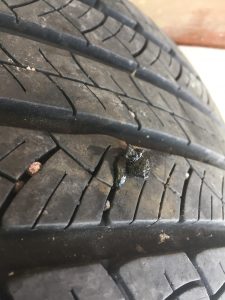
(Last picture: plugged and ready to go!)
The border experience itself was rather funny this time: on the Armenian side the luggage control was thorough, but the guards were cracking jokes with us the whole time. On the Iranian side everybody seemed confused that we drove a Belgian car all the way to Iran. After lots of gesturing and talking to us like we understood Farsi, an English speaking official was found. We understood that we had to go back to the start of the border control, to pass through an X-ray machine with the car. So we duly did. Again lots of gesturing and shouting. Apparently we misunderstood, it was not an X-ray machine (no idea what it was then :). They wanted us to take our luggage out and move this through another machine inside. As nobody accompanied us, they just took our word that we did so, strangely enough. The most important thing to them, as far as we could tell, was that we didn’t bring any wodka into the country…
After getting our Carnet de Passage stamped, we finally drove into Iran. We drove along the border for a while through the Aras river valley, before we drove on to Tabriz to spend the night.
On our way to Tabriz, we had to top up our fuel tank for the first time in Iran, which was a bit confusing. The guy at the fuel station didn’t speak any English, but with some difficulty we finally understood that we had to pay 300 000 Iranian Rial. Which seems like a lot at first sight, until you realise 1 euro equals 60 000 Rial. Which means we paid exactly… 5 euros for 50 liters of diesel. So we’re basically driving around Iran for free 🙂
(Later on, we changed a 1000 dollars to Rials, and we ended up with 50 million Rials. When you know the largest bank note is for 500 000 Rials, you realise we ended up with lots of grubby bank notes…)
Sunday, the 1st of April
Our first real note on Iran is the origin of the title of this post. So far we’ve noticed that Iranians are just as friendly as we had hoped for, going by our travel research. This changes however, when they get in their car.
Iranian traffic is hell.
Simple as that. To give you an idea, we’re paraphrasing a quote from the Lonely Planet: “Some would describe Iranian traffic as chaotic and unpredictable. Others would say it’s a death-defying circus.” We’re inclined to agree with the latter. Whatever we wrote about Turkey earlier, we take it back…
Drivers weave in and out of lanes without indicating, cutting you off, speeding past you left and right… Basically just doing whatever they like. In the cities, you need to have a 360° view around your car at all times. Driving around in a city for an hour gives you an instant headache. Luckily, we’re avoiding Teheran, which is supposed to be worst of all :).
But as written earlier, the Iranians we’ve met personally so far, have been very kind and welcoming. We regularly receive stuff for free, everybody welcomes us to their country, invitations to lunch…
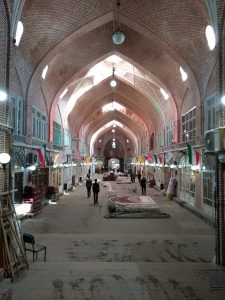
(Bazaar in Tabriz.)
On our first complete day in Iran, we drove from Tabriz to Kandovan, a little troglodyte village in the mountains. Supposed to be really beautiful. What we didn’t take into account however, is the festivities around Iranian New Year, No Ruz. No Ruz is the 21st of March, but everyone takes two weeks off, so everything is packed with Iranian tourists until early April. So when we arrived in Kandovan, it was sheer chaos: cars trying to park everywhere, lots of people, cars honking. So we beat a hasty retreat. Besides, under a grey sky, Kandovan itself wasn’t much to look at either:
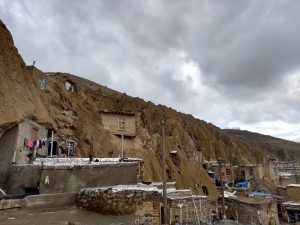
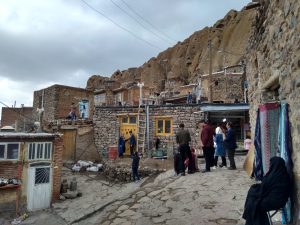
We wanted to drive a large part of the way to Teheran (where we would pick up Abdel on the 3rd), so we hit the road again. The idea was to drive by the Colorful Mountains on our way to Zanjan. Tom thought he had found a nice way through the Mountains, with only a small detour. One problem: on arriving in the neighborhood, this road didn’t exist (according to our GPS). So we had to retrace part of our steps, and the small detour became a big one. No Colorful Mountains either, but still some nice views along the way:
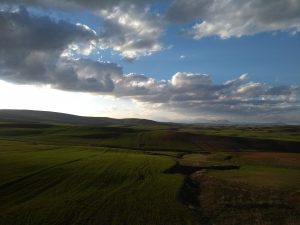
In the end we decided to drive on all the way to Qazvin (500 km from Tabriz). We made it, but it took us until midnight. Two more examples of Iranian kindness though.
For the first time, we encountered toll stations on the highway. When we passed the first one, Wafa asked the guy behind the counter how much we owed him. He just looked at us, said ‘No’ with a dour face, and let us through. Someone’s fed up with his job, we thought. However, ever since, we’ve only been paying at 1 out of 4 toll stations we pass. Most officials just welcome us to Iran and wave us through :).
On arriving at the Qazvin hotel we picked from the travel guide, the guy at the reception first gave us a nice discount on our room, and then a free upgrade to a suite. Slept like a baby!
Monday, the 2nd of April
On Monday, we wanted to go hiking in Alamut Valley, home of the Castles of the Assassins. The Assassins were a mystic cult of… assassins, whose might was only broken by the Mongols invading the Middle East in the 13th century. Their castles were besieged and destroyed, leaving behind nothing but ruins. Supposed to be a really beautiful hike.
However, as we soon found out, this day was also the feast known as ‘Nature’s Day’ in Iran. With ties to Zoroastrianism, one of the oldest organized religions, this feast means Iranians everywhere decide to go picknicking for a day. Mostly in the parks nears the cities, but also in Alamut Valley it seems. From the moment we left Qazvin, we were stuck in a traffic jam. With still 100 km to go.
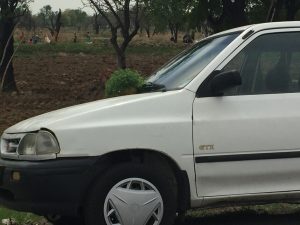
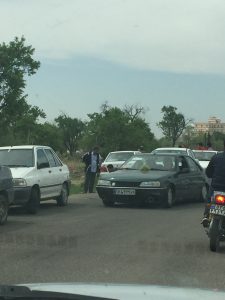
(This holiday also has everybody putting wheat sprouts on the hood or roof of their car. This is supposed to fly off, and take with it all bad luck you’re carrying around with you.)
So we beat a hasty retreat (again), and decided to visit the city of Qazvin itself. The roads were empty (which was nice), but everything was also closed (not so nice). So we found ourselves with nothing to do. In the end we met a French couple, Elodie and Matthieu, who we ended up spending the entire afternoon with. They’d already spent two weeks in Iran, so it was interesting learning from their experiences.
Tuesday, the 3rd of April
The holidays of the past couple of days, also meant that most offices had been closed. So on Tuesday, the first thing we had to do was get our car insurance for Iran. (We didn’t find an office when we first entered Iran, so we’d been driving without insurance for 3 days at this point, in some of the worst traffic of the world. Whoops.)
After 2 hours spent gesticulating, waiting, explaining, some more waiting and lots of phone calls in Farsi, we received our insurance. We decided to spend the rest of the afternoon in the Qazvin bazaar, which had a really nice terrace café (one of the only ones we’ve seen in Iran so far… there’s definitely an opportunity there).
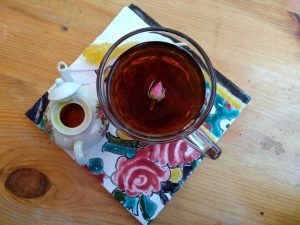
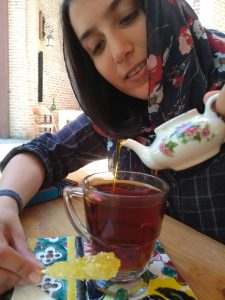
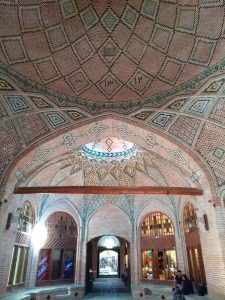
(Saffron tea in the Qazvin Bazaar.)
Next time: picking up Abdel from the airport!
PS: answer to the quiz: first picture is Turkey, then Serbia, finally Armenia!
